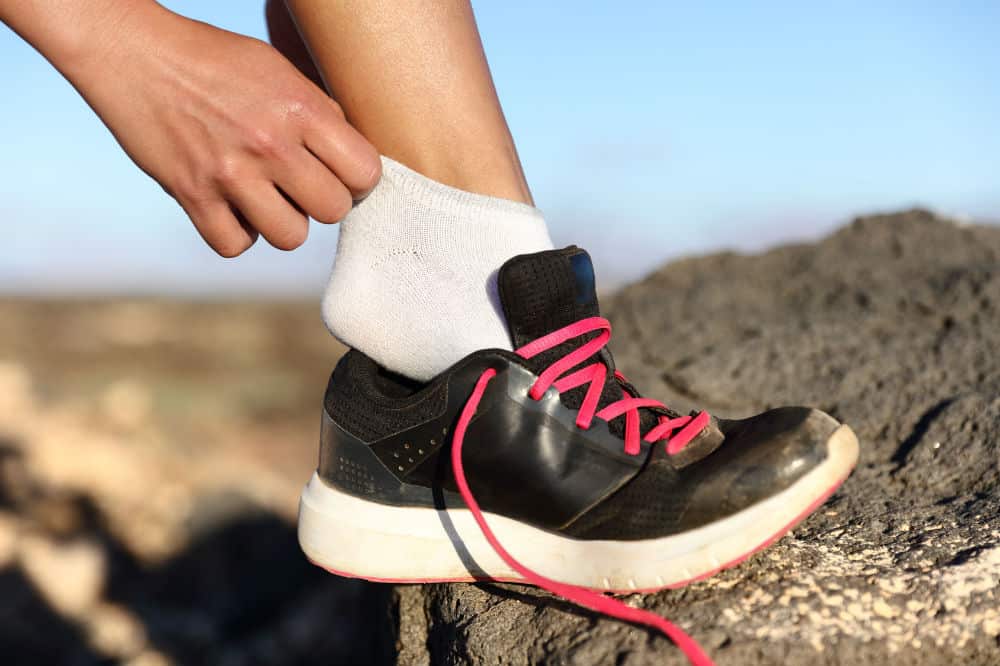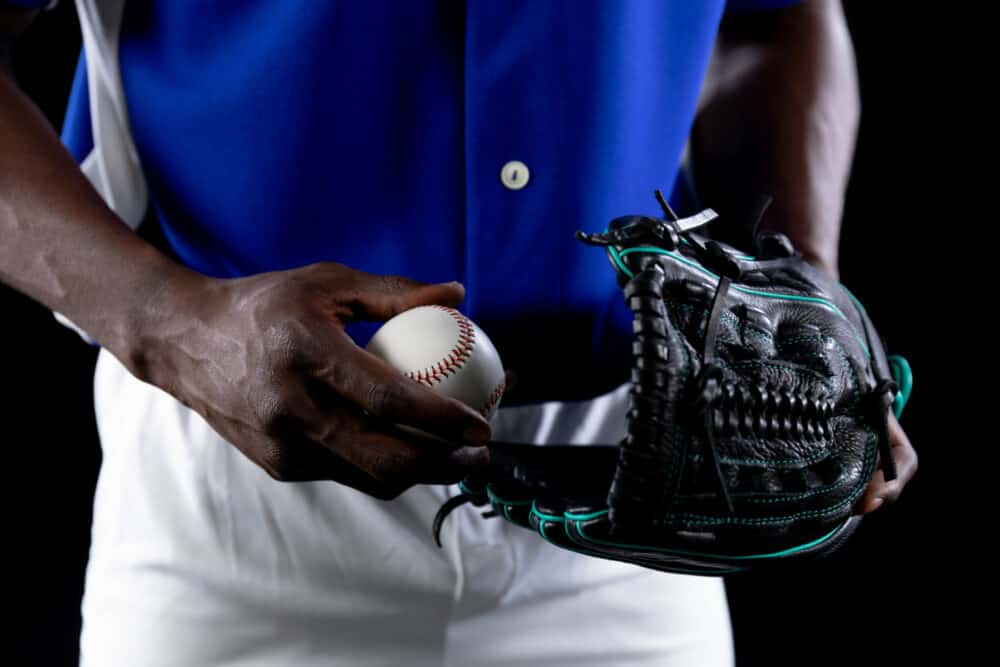As a rider, you want your bike helmet to reflect your personality and style without compromising your safety. But is that even possible? And what options do you have? In this article, we will have an in-depth look at the various ways of personalizing your bike helmet without compromising safety.
We will also analyze the certifications and safety standards that bike helmets must adhere to and discuss some of the common mistakes people make when customizing bike helmets.
But first, we start with the juicy details.
Common Bike Helmets Customization Techniques
Below are innovative yet simple ways to add some personal styles to your bike helmet.
Adding Personal Touches
Decals, stickers, and innovative accessories such as chain links are clever ways to transform your bike helmet. Decals can range from simple logos to personalized artwork. You need to ensure these adhere well to the helmet shell, without bubbles, for a neat and smooth finish.
While decals and stickers are straightforward – peel and stick – how do you add a chain? For starters, you can incorporate a chain on the straps. However, you must ensure it doesn’t end up choking you since unlike fabric and leather straps, metal chains are not elastic.
You can also add your chain using metal rings, commonly referred to as jump rings. Secure these rings on each end of the chain and attach the chain via existing ventilation holes on the helmet or other suitable anchor points. Similarly, you must ensure the chain is not a threat to your safety either by obstructing your vision or by blocking key ventilation points.
Vinyl Wraps
Just like decals, vinyl wraps are adhesive sheets that give your helmet a different look while protecting the surface. Since vinyl is naturally resistant to scuffs, the stripes protect the helmet from scratches and minor abrasion from flying objects as you ride.
Vinyl also offers protection from UV light. This protects the shell’s shiny appearance and extends your helmet’s shelf life despite constant exposure to sunlight. Moreover, the wraps retail in multiple colors and patterns which makes them easier to integrate with diverse fashion styles.
Helmet Graffiti
You can customize your helmet by adding an artistic detail to the shell. Using paint brushes or airbrushing, you can create intricate designs and diverse finishes such as gradient, shading, and multicolored finishes. Some textured paint can also produce a 3D effect on the helmet exterior.
However, with paint, you want to do it in such a way that the helmet still remains visible. This especially applies to helmets designed for riding on a busy highway. The last thing you want is to block the reflective sections of your helmet.
Luckily, thanks to modern technology, we now have reflective paints. You can choose to integrate reflective stripes on the helmet to add to your visibility. Remember, the aim is to personalize your bike helmet without compromising safety.

Hydro-Dipping
This technique takes your helmet graffiti a notch higher. It involves the use of a water bath to transfer a custom-printed film to the helmet’s surface. While it’s still possible to achieve hydro-dipping on your own, it’s more convenient to engage a professional for this one. These professionals will first pre-treat the helmet using a primer, base, or adhesion promoters, before applying a clear coat. Note that some will add all these pre-treatments depending on your helmet’s material and the desired outcome.
They will then dip the helmet into the water bath a few times until they achieve the desired finish. It is safe to say that hydro-dipping results in a very light yet durable film layer. So you don’t have to worry about compromised structural integrity or blocked vents. The professionals also know how to avoid residue from excess PVA (polyvinyl alcohol) which is a common DIY challenge. Too much PVA causes bubbly paint or a sticky and relatively thick paint layer.
Removable Helmet Covers
Unlike the above customization techniques that involve a permanent addition, helmet covers offer quick ways to style your riding gear while preserving its integrity. They are easy to fix and remove and come in various designs, colors, and patterns.
LED Lights
Do you admire the fancy helmets that blink and shine in the dark? Well, helmets don’t sell with all those fancy lights and fiber optics you’ve seen. The owners have added them, and you can achieve the same look easily. But first, ensure you purchase lights designed for bike helmets.
Such lights and fiber optics are pre-sized to fit standard helmet vents, so you can quickly loop them around the helmet to achieve your desired outcome. Some are also designed to loop snugly around the rim of your helmet.
Customized Straps
This technique will most apply to helmets with removable straps. You can purchase these decorative straps or add an artistic touch to yours. Small accessories such as tags and charms also add a nice fashion statement for the minimalist riders.
Understanding Helmet Safety Standards
In regard to compromising a helmet’s structural integrity, what dictates your riding gear’s safety? Let’s now look at the industry’s set standards and safety measures as promised.
Consumer Product Safety Commission (CPSC)
CPSC is a government agency in the United States that governs products by ensuring they are safe for consumers. The agency sets safety standards for multiple products including toys, household appliances, sports equipment including helmets, and others. They also investigate potential product-related hazards and issue safety alerts if necessary.
EN 1078
EN 1078 is a European standard to govern helmets manufactured for pedal cyclists, skate users, and skateboarders. It ensures the helmets comply with certain stipulated requirements in their design, construction, marking, and testing. EN 1078 certified helmets will have a CE mark.
Snell Certification
You might have noticed helmets certified as Snell B-2020, B-90, or B-95. The Snell Memorial is a non-profit foundation that sets helmet safety standards beyond the CPSC standard.
ASTM F1447
ASTM International developed a certification commonly accepted in North America to regulate bicycle helmets specifically those used for sporting or recreation purposes. They set standards for impact protection, the strength of the helmet retention system, and its stability, among other safety factors.
JIS T 8131
This standard applies to helmets sold in the Japanese markets. Set by the Japanese Health, Labor, and Welfare Ministry, JIS T 8131 regulates compliance with impact absorption, and strap retention among other safety requirements.
AS/NZS 2063
Finally, in New Zealand and Australia, the AS/NZS 2063 outlines bike helmet standards retailing in these regions. These helmets must conform to specific standards in impact protection, field of vision, and effective retention systems. Helmets compliant with these standards will have an SAI Global mark.
As you can see from the above, helmets will have different certifications depending on the target market.

7 Pitfalls to Avoid When Personalizing Your Bike Helmet
As much as we want a helmet to reflect our fashion statement, the following could be potential drawbacks if you over-customize a helmet:
Impaired Visibility
Road visibility goes two ways – other motorists need to see you on the road, and you need to maintain clear sight of your trail. When you, for example, use dark paint in your graffiti, it will be impossible for other road users to spot your head.
Similarly, when you cover or obstruct the helmet’s built-in safety features such as reflectors and built-in lights, you might compromise your visibility. The same applies to your visor. Don’t add elements that can contribute to blurred vision.
Altering the Helmet’s Structural Integrity
Modifications that would weaken your helmet’s structural integrity might put you at risk should you accidentally crash. See, a helmet is designed in such a way that it is able to absorb impact and distribute these destructive forces within itself hence preventing your head from injury. But when you drill through the shell or cut the polymer structure or even remove some of its parts, you weaken its structure and compromise its ability to absorb and distribute any collision forces. And while no one wishes to crash, accidents are sudden, and we need to be prepared at all times.
Compromised Ventilation
The modern helmet is designed with the rider’s comfort at heart. That’s why you find helmets have multiple vents and internal air channels. These vent systems work in harmony to provide adequate air circulation, hence keeping you cool and dry throughout the ride.
When you position your customized elements wrongly, they might end up blocking these vents and compromise ventilation. The result is a helmet that makes you feel excessively hot and sweaty because it accumulates all the heat you generate without a way to effectively release the heat or allow cool air in.
Some riders also cut through the mesh structures, which exposes them to excessive air circulation. This results in uncontrolled wind noise and air particles penetrating inside the helmets.
Incorrect Fit
A common, yet dangerous customization technique is adding or removing the helmet padding. What this does is interfere with fitting. If you need to add more padding, ensure you buy a size higher to cater to the addition.
Use of Unsafe Helmet Material
If you need to add foreign materials to the helmet, avoid using materials that are corrosive, flammable, or heavy. Or generally, any material that would put you at risk. For example, adding heavy material to a helmet might affect its ability to absorb and quickly distribute impact. Adding corrosive material to your padding might affect your skin over time.
As a rule of thumb, always use non-toxic, lightweight, and flame-resistant material to adhere to the helmet’s safety standards.
Hiding Critical Information
Most helmets display critical information such as size, certifications, and emergency details. If any of your customization techniques overlap this information, you might put yourself in danger. Always ensure this information and any other essential markings on the helmet remain legible and clearly visible at all times. They are written on that helmet for a reason.
Poor Attachment of Applications
If you fix elements such as decals and stickers, ensure you use adequate adhesive. The type of adhesive or the most appropriate adhesive application technique varies depending on your helmet’s material. Similarly, if you add hanging elements such as chain links, ensure they are properly secured on the helmet. Any loose attachment might detach as you are riding full speed and obstruct your vision or distract your concentration on the trail, putting you at risk of collision.
Conclusion
While the above customization options enable us to transform our riding gear into a piece of art, don’t forget that safety is the main reason you need the bike helmet. Consider the pitfalls we have discussed and steer clear of them to avoid deteriorating the structural integrity of your safety gear. Also, consider the materials you use when personalizing your bike helmet to avoid facilitating wear and tear. If you’re still uncertain about anything, always consult with your helmet manufacturer for guidance tailored to your helmet model.














I like the idea of customizing your helmet that gives it your personal touch. It provides a little statement about you as the individual rider.
I also agree that you should keep the safety standards intact as you make these personal touches. Not too sure about adding LED lights to ride at night, guess I’m getting older and prefer to stay off the roads at night. However, I am sure they look very cool and provide some safety as a visual tool while riding after dark.
Thank you for sharing your insights on how to apply customizations to your bike helmet while keeping the safety standards intact.
Hi, MIKE, and thank you.
Thank you for your kind words.
I agree, the safety is first and the look number 2. But when you can have both, I take that! 🙂 For example, here is a post you could want to read. It is about some opinion if the Full-face helmets are too much.
Great to hear about the benefit of the article too.
Don’t hesitate to contact me to help you with anything else or if you have any questions.
You are correct in saying that the reason one buys a bike helmet is to ensure your safety and it is easy to get carried away when customizing your helmet. You have put a lot of thought into this post and some of the things you mentioed I would not have even thought about. Is it even safe to have things hanging off your helmet? I don’t think I would do the chain thing either in case it injures me when I have a fall.
Hi, Michel Maling, and thank you.
Thank you for your kind words.
You need to think about 2 things when you do things like that. A) Safety comes first; we are defending the head! And B) You need to feel comfortable about it.
Great to hear about the benefit of the article too.
Don’t hesitate to contact me to help you with anything else or if you have any questions.